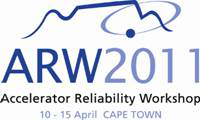Speaker
Dr
Cherrill Spencer
(SLAC National Accelerator Laboratory)
Description
Whether one is using electromagnets in a small accelerator to produce synchrotron radiation or in a very large accelerator to produce high energy particles for basic research experiments, or in a proton therapy medical device, their availability is paramount to the overall success of the machine. Availability is defined as the average ratio of the time that the system or component is usable to the total amount of time that it is needed. The availability A is calculated using two other parameters, the Mean Time Between Failures (MTBF) and the Mean Time To Repair (MTTR): A= (MTBF)/(MTBF+MTTR). The MTBF is the inverse of the failure rate and improving the reliability of any device means to reduce its failure rate. There are many ways that an electromagnet, which is comprised of several different components, can fail. So a magnet engineer who is designing a new style of magnet must use their knowledge of the failure modes of older styles of magnets to influence the design of the new style so as to avoid the known types of failures and decrease the failure rate.
A structured, qualitative procedure for identifying the root causes of magnet failures is called Failure Modes and Effects Analysis (FMEA). We carried out a FMEA on typical electromagnets designed and fabricated at the SLAC National Accelerator Laboratory. This procedure identified the failure-prone features in SLAC magnets. In order to learn from the experiences of other labs regarding their magnets' failure modes and how they have dealt with them, a survey will be carried out of designers and users of accelerator magnets worldwide in the weeks just before this ARW. The questions on this survey will cover both common and rarer ways that magnets break down and will seek descriptions of successful solutions and improved performance achieved by other users. This talk will use SLAC's magnet experiences and the answers to this survey to provide advice on how to improve the reliability of accelerator magnets.
Primary author
Dr
Cherrill Spencer
(SLAC National Accelerator Laboratory)

